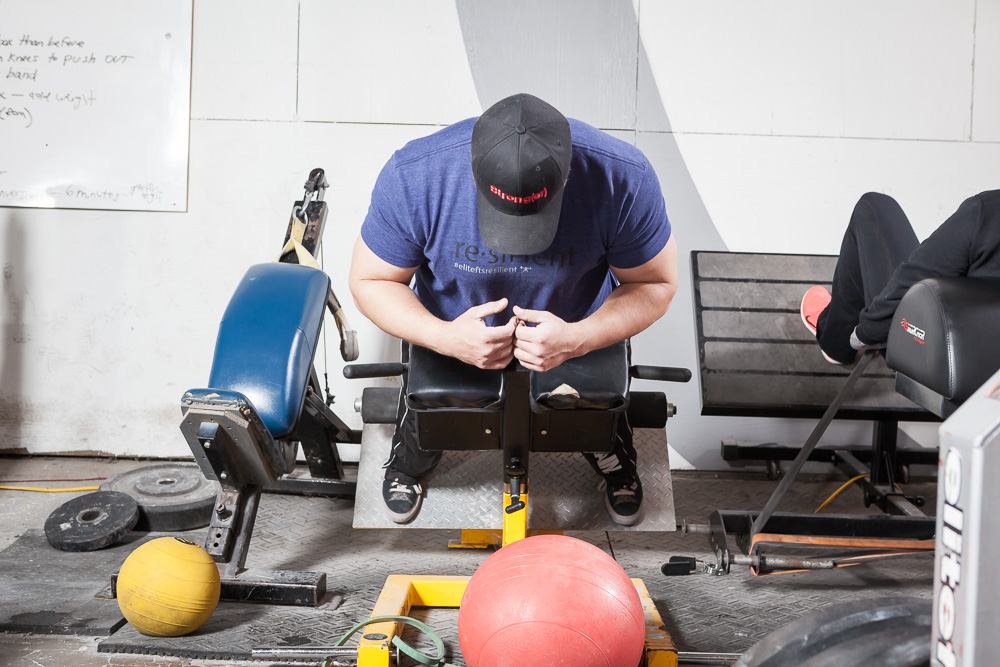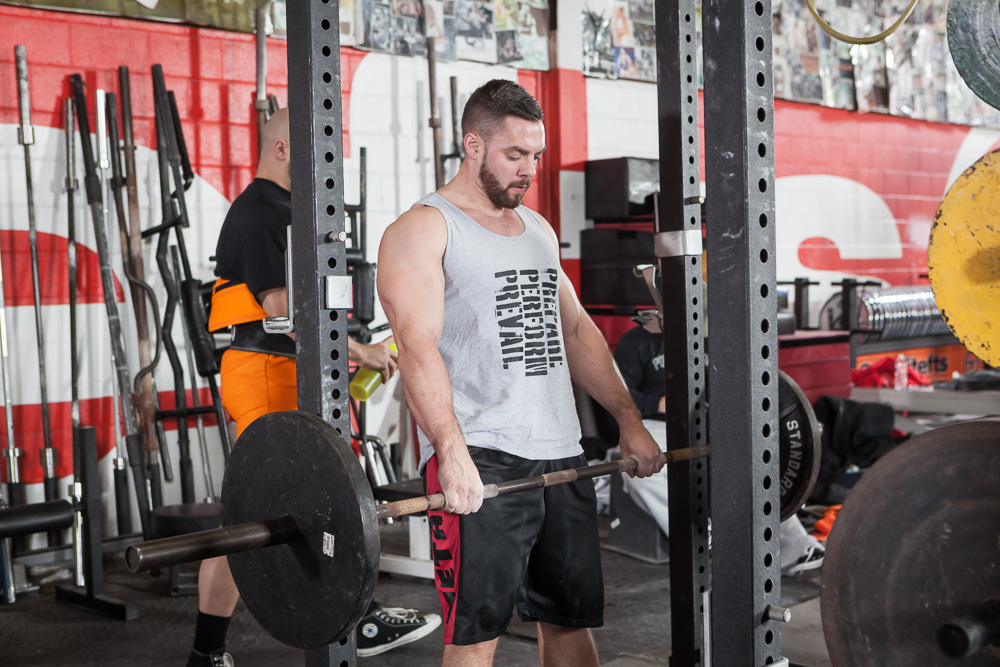
I'm currently in the process of moving across the country. I'll be assuming a teaching position in which I'll educate and train personal training staff. “Training trainers” is something I've done in the past and it's something I’ve always enjoyed immensely. In anticipation of this, I’ve been reviewing my own personal training history and considering common mistakes and pitfalls that I've fallen for or that other trainers on prior staffs I’ve worked have fallen into themselves.
Trends dominate the personal training industry, and every year there are “new” ones, which are generally just five- and 10-year versions of previously recycled trends. These trends vary, but they almost always present themselves as “panacea” answers to your fears and insecurities about your training being lousy.
I know I talk about context constantly, but the lack of historical and educational knowledge by most personal trainers in the industry makes people highly susceptible to falling for bullshit. While industry history is another topic, self-education goes a long way toward staying away from trends so that you don't spin your clients' wheels with wasted training time or your own wheels in figuring out what “works” and doesn’t work through unnecessary trial and error.
Mistakes are unavoidable but that doesn’t mean they shouldn’t be preventable either. The following are the more prominent or popular “trends” that have sounded great on paper but were practical failures when applied and investigated.
Barbell Complexes
A few years back when the anti-cardio trend was at its peak, barbell complexes were all the rage for conditioning. They consisted of 10–20 minutes of compound movements performed 2–3 times and BOOM! Your heart rate is up and you're done.
Along with complexes for conditioning, there was also a popularization of doing multiple barbell movements within the same workout like squats, front squats and Romanian deadlifts. These movements would often be done with similar rep ranges for “strength” training.
RECENT: Build a Bigger Bench: The Female Edition
Anyone who knows me knows that I love the barbell, and I feel it's vastly underappreciated. You can teach anything from muscle activation to posture to general kinesthetic awareness. But that doesn’t make it “good” for everything, and for the general population, the major issue with the barbell is a very simple one. Most people aren't instantly ready to squat, bench or pull when they first walk into a gym. For the majority of clients, they're likely a few weeks away from doing these movements with appreciable form for “heavy” sets. I've also never seen a general population client walk through the doors able to do all of these with OK technical proficiency in a fatigued state, especially for conditioning,. Teaching someone to squat isn’t hard, but it takes a few weeks for them to learn the proper mechanics. Add in all the other movements and you're looking at a grouping of exercises that represent at least three months to fully learn before they can all be executed in sequence. Curls and shoulder presses are easy, but good mornings and power cleans? For a beginner who just started lifting, this is ill advised.
With the barbell complexes, a typical complex consisted of 5–6 exercises of some of the following:
- High pull
- Front squat
- Shoulder press
- Back squat
- Good morning
- Push press
- Romanian deadlift
- Power clean
Great exercises, right? Sure, they are. But for clients who are older, beat up, have joint issues and/or contraindications, terrible posture and other issues, doing movements like front squats, power cleans and good mornings don't tend to be very effective exercises. You often have to fix multiple issues before they can even be performed correctly and then that begs the question, "Why are you spending a month working the hell out of wrist mobility for a 40-year-old man who just wants to lose weight and not have low back pain?" And maybe the client didn't even know he had wrist issues until you told him he did because he can't do a racked front squat.
What to do for conditioning then? I've always told trainers to follow two principles:
- If there’s a real chance that the client will get injured, don't do it, and I will stop you if I see you doing something stupid.
- Ask yourself, "What is it actually improving?" Cool isn't an answer. "So and so says to do them” isn't an answer, and “their heart rate will go up” is also not a good answer. Someone's heart rate will go up if I have them spin in circle…and your point is?
I'm looking for a rationale, and it should be something more than a sound byte.
Strength Training All the Time
Powerlifting has had a positive impact on personal training in that it makes trainers aware of the need to periodize, plan and utilize compound movements. But it has also had an unfortunate influence on personal training in the same fashion. Lest someone freak out, I'm not calling powerlifting “bad.” Rather, in the context of training regular people, it's something that gets misunderstood by the trainer and then misapplied to the client.
Because “strength” in the big three has become so highly coveted, it leads to inappropriate programming, with both trainers and clients mistakenly using meet preparation protocols with novice trainees or just general constant high intensity work week in and week out. This often neglects a client's personal goals of improved body composition and overall muscularity (I want to tone up). The repetition method (i.e. bodybuilding style training) carries a higher metabolic cost than powerlifting and is also much more effective for improving body composition. My own practical experience as well as that from many others and research studies supports this should anyone wants to eviscerate me in the comments. Jim Wendler has made a similar point in the past, so I'm not making this shit up.
As such, what most personal trainers end up using as “strength work” isn't true periodization. Rather, it’s a misunderstanding of what periodization is. Maximal strength is one sub-quality of strength. It isn't the end all and it isn't meant to be trained year around.
If someone studies various classic training texts relating to physical development in athletes, you will quickly discover that high intensity lifting (80 percent and above) is not employed year round. Triples and singles aren't executed week in and week out. In fact, the majority of athletes go through periods and/or phases of preparation, including general physical preparation (GPP) of higher rep movements and a variety of movements followed by hypertrophy (8–20 reps of working sets) and specialized phases relative to the specificity of their sport.
What does this mean for personal training? It means that low rep, high intensity “strength” training is generally inappropriate for novice clients. Three sets of five isn't enough stimulus to create the necessary and desired adaptations. The repetition method, or classical bodybuilding, is more effective at training a broad variance of movements and exercises while being adaptable to improve whatever movement issues may arise.
Olympic Lifts
This has been talked about to death already, but I'll restate a point. Olympic lifts are for Olympic lifters. The situation in which Olympic lifts are appropriate to teach beginners is the following:
- You have experiential and hopefully certifiable credibility in teaching the lifts and can perform them yourself with great technical proficiency.
- You are training Olympic lifters.
- You have clients who have phenomenal flexibility and active muscle control and the Olympic lifts suit their desired goals (which I assume has something to do with learning the Olympic lifts).
If you can't fulfill the first requirement of the situation, the other two are a moot point.
I’ve seen these lifts absolutely butchered by trainers who can barely perform even modified versions of them and then they attempt to teach them to clients who are nowhere near having the movement capacity to do them correctly let alone safely. The result is utter tragedy.
This is bad training. Period. Olympic lifts aren't a panacea nor an answer for fat loss, muscle building, mobility or really anything. There are a number of alternative movements that can be used to develop general explosiveness and power including medicine ball throws and slams, push presses, dumbbell push presses and snatches, various jumps, battle rope slams and appropriately graded plyometrics, to name a few. The point being, there are much better choices.
Plyometrics for Reps
Although I've mentioned plyometrics, they need to be covered by themselves. I'm not just speaking about box jumps. I'm describing the proliferation of jumping, hopping and bounding and every variation thereof that I've seen proliferate in commercial gyms since 2010. Plyometrics are abused constantly, especially with “bikini” and female fitness competitors. Their touted benefits are usually “HIIT training/fat burning/performance/booty shaping/conditioning” or something like similar. This is all wrong. And I don’t say this often, but I will vastly generalize in this case and say that 99 percent of personal trainers and trainees do plyometrics incorrectly. Personal trainers should never use them with their clients or do them at all. Period.
RELATED: The 3 Qualities of a Great Personal Trainer
I say this not to single people out but to point out that the fitness field collectively has no idea what plyometrics are and the majority of trainers and trainees simply have no idea what “plyometric” means.
So history lesson time...plyometrics were originally simply called “jump training” and they were first used by the former USSR starting in the 1920s. In the 1960s, the very famous sports scientist Dr. Yuri Verkhoshansky pioneered their use further by creating specific routines and formal criteria for how they were to be performed. He did this over a long Russian winter in which track athletes were forced to train indoors. It allowed him to closely control the training and compile data.
The criteria for athletes performing plyometrics is:
- The athlete must be able to squat 1.5 times his/her body weight, preferably double body weight. If the athlete can't do this, do not use plyometrics. Period.
- The athlete must be older than 18 because the impact from jump training can be very damaging to the growth plates and is very hard on the joints overall.
- The working volume for plyometrics should be the minimum effective dose. The standard is 3–5 sets of 3–5 jumps. (Yes, it is really that low.)
Plyometrics were specifically intended to improve rate of force development (power) and reactive strength (the ability to rebound quickly in linear and lateral movement). This was all they were meant for. When used appropriately, they improve an athlete's vertical jump, broad jump and overall quickness. They are also never done to fatigue. Ever.
What does that mean for personal training? Looking at the above criteria, does it make sense to use plyometrics for “torching fat” or for an hour straight with 300–500 reps in a row? And that will improve “performance?” If your answer is yes, you are beyond help.
Daily Undulating Periodization
The premise of daily undulating periodization (DUP) is that you train different physical qualities on different days. Power, strength and hypertrophy are usually what forms most DUP programs. Basically, to oversimplify, you vary your rep ranges. This sounds great in theory and it seems highly applicable for the general population. You can train strength. You can train hypertrophy. You can have metabolic conditioning days. You can have your cake and eat it, too.
I thought this at one time...the last time DUP was popular back in 2011. And after about two weeks, I completely tossed it. Why? The one study that gets promoted constantly as espousing the superiority of DUP was done on highly experienced Norwegian powerlifters with advanced strength levels. I don’t know any personal trainers who are training competitive Norwegian powerlifters. I sure as hell wasn’t, so retrospectively perhaps, this isn’t so applicable to the general population.
The powerlifters in said study trained 5–6 days weekly (I believe it was six). For the general population, it's considered a major win if you can get them to train three times weekly. Again, this is becoming less applicable in the context of relevancy. The majority of DUP systems use percentage-based training. Percentages of a one-rep max aren’t useful with the general population because they are untrained and don’t have safely assessable maximal strength levels. This then throws off the rest of the programming.
Maximal lifting for beginners is a poor programming decision. DUP plans that have maximal days may not work very well. With base strength being low, “power” exercises or dynamic days are largely hit or miss and mostly miss. Again, you have a coordination issue. Someone who just learned how to bench with his feet on the floor doesn’t need a dynamic bench day. When every physical quality is undeveloped, specialization days are complete overkill.
Trying to explain DUP to clients is a lost cause. Most people have never even heard the word periodization or the word hypertrophy. And they really don't know anything about training in general beyond “it's exercise and it's good for me I think.” DUP is simple only with a lot of requisite knowledge. Also, how the hell do you keep track of and progress six different workouts for clients who are training three times a week. You'd be telling them to do the other three on their own and how do you do this in a time efficient manner for multiple clients?
What does this mean for personal training? Stick with linear periodization. It has been battle tested for about 100 years and it works really, really, really well.
In Closing
There are three lessons that I want to pass on to everyone reading:
- “Tried and true” beats “new and unproven” almost every time.
- Few things are truly “new.” More often, they're just repackaged and taken out of context and then pitched again for those who don’t know any better.
- Concepts that worked extremely well and are said to be panacea tend to arise from extreme situations or highly specific situations, the majority of which are rarely applicable to general populations.
While I have no doubt that someone will read this and want to point out exceptions, exceptions don't make rules nor do they make good standards of practice. Beyond the lessons given here, develop your own filter for fitness information by educating yourself and doing your research before deciding whether or not something is the next best thing. Learn and apply to life. "Live and learn" is excellent, but the hard way becomes the stupid way when you insist on making everything hard.














Regarding periodization:
What should a personal trainer do once a client stops responding to a linear periodization protocol?